As Japans capital welcomes immigrants and prepares to host the Olympics, 2019 could be the year the worlds largest megalopolis goes truly global
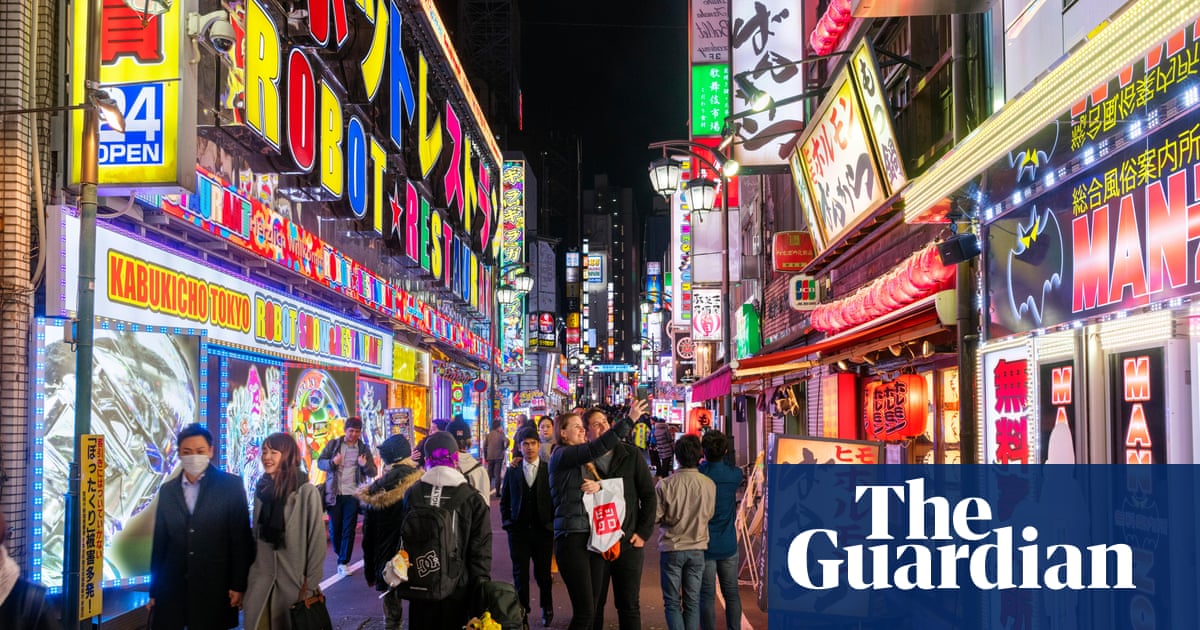
On a warm May evening in the narrow alleys of Omoide Yokocho (Memory Lane) next to the Kabukicho district of Tokyo, tourists perched on stools study English-language menus offering skewers of grilled meat and vegetables. Others crowd into the garish, glowing Robot Restaurant, a cavernous hall of flashing neon and dancing animatronic figures, or snap selfies in front of the giant replica head of the citys sci-fi nemesis, Godzilla. In neighbouring Shibuya they drive convoys of go-karts through the streets wearing costumes bearing a suspicious resemblance to Mario, Luigi and the other Mario Kart characters. (Last week Nintendo successfully sued the MariCar company for copyright infringement for the second time.)
After many decades as a famously impenetrable city to visitors, Japans capital is finally beginning to face outward. Tourism, particularly from China but also western countries, rose to record levels last year, and next summer the city will slide open its doors for the Olympics and Paralympics. The country has relaxed its restrictive immigration rules, a move that promises to transform Tokyo. The capital is already dotted with co-working spaces, artisanal coffee shops, international brand boutiques and the other accoutrements of a global city.
Q&A
What is Guardian Tokyo week?
As Japan’s capital enters a year in the spotlight, from the Rugby World up to the 2020 Olympics, Guardian Cities is spending a week reporting live from the largest megacity on Earth. Despite being the world’s riskiest place with 37 million people vulnerable to tsunami, flooding and due a potentially catastrophic earthquake it is also one of the most resilient, both in its hi-tech design and its pragmatic social structure. Using manga, photography, film and a group of salarimen rappers, we’ll hear from the locals how they feel about their famously impenetrable city finally embracing its global crown
By many sensible measures, it met that criteria long ago. It is the worlds largest megalopolis, by far, with 13 million people in the central wards and a greater metropolitan area home to 37 million (Delhi is second with 27 million). It boasts the worlds largest metro economy, with a GDP bigger than that of New York and London, and is home to more global company HQs than any other city. Its public transport network, cleanliness, low crime rate and cuisine are unrivalled.
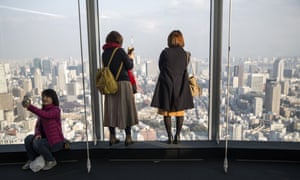
By other reckonings, however, Tokyo remains slightly out of step with its global cousins. Women remain rare in senior business and government positions, restaurants still fill with carcinogenic cigarette smoke and an alarming number of Tokyo citizens die from overwork.
The city has embraced international consumer culture, but Tokyo isnt diverse, at least not in the way London or New York are, says Christopher Harding, senior lecturer in Asian history at Edinburgh University and author of Japan Story: In Search of a Nation. All over Tokyo you have film, TV, music, shopping, gaming and so on that feels opened up and cosmopolitan, while underneath, attempts to open up in terms of diversifying the population and shifting the attitudes of local Japanese about who belongs and who doesnt havent really got anywhere.
This year, however, may be Tokyos great tipping point, with genuine transformation into a more open city taking on an air of inevitability, both for demographic and business reasons.
In Shinjuku, the Tokyo ward where Kabukicho is located, you could see this wave of change first-hand in January on Coming-of-Age Day, when people who turned 20 in the previous 12 months celebrate reaching adulthood. Around 45% of new adults were of foreign origin, and non-Japanese now make up just over 10% of the wards total population, according to the ward office. By contrast, foreign nationals make up just under 2% of Japans total population, according to a 2018 survey by the internal affairs and communications ministry.

The changing face of the typical Tokyoite will continue. Last year, Shinzo Abes conservative government relaxed immigration laws to open the countrys doors to up to 345,000 workers over the next five years.
The decision was less a sea change in traditional resistance to immigration and more of an ad hoc response to the tightest labour shortage in decades, as the number of Japanese people of working age continues to shrink.
While immigrant workers are being dispatched to the regions to work in creaking industries such as agriculture and fisheries, Tokyos service sector is also snapping them up. The city now has 551,683 foreign residents, or 3.98% of the population, compared with 2.44% in 2000.
It has also taken the lead in promoting diversity. In 2015, Shibuya ward became the first place in Japan to issue certificates recognising same-sex partnerships as equivalent to marriage, allowing same-sex couples to rent apartments together and granting them hospital visitation rights. Even as the national government remains resistant to legalising same-sex marriages, 20 municipalities in Japan have followed Tokyos lead with partnership systems.
The Olympics, too, may have a profound effect, if the first time the city hosted the event is any indication.
In what has been described as the greatest urban transformation in history, the 1964 Games saw a period of mass investment in infrastructure, water and sewage systems. In the five years leading up to the torch relay, 10,000 new buildings appeared in the capital, as well as five 5-star hotels, two new subway lines and a monorail from Haneda airport to the city centre. The Olympics also marked the debut of Japans greatest contribution to high-speed travel: the Shinkansen bullet train.
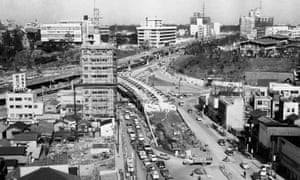
This helped transform Tokyo from a diseased backwater where only 25% of houses had flush toilets into a global megalopolis, says Robert Whiting, author of Tokyo Underworld. Next years Games, he says, will help the world see what a global city Tokyo has become.
Peter Matanle, a senior lecturer at the School of East Asian Studies, Sheffield University, says: The 1964 Olympics was a huge boost in terms of opening up Tokyo to foreign visitors. One thing that it did was also to make Japan and Tokyo more accessible for other Asians in particular, as many had bad feelings towards Japan. The Olympics helped to build a new era for Japan as a peaceful country in Asia, as much as in the rest of the world.
The steep curve of development sparked by that sporting event may have levelled out, but the momentum of change extends to the sector for which Tokyo is perhaps best known: its restaurant scene.
Tokyo can now lay claim to being the most global restaurant city on Earth. It has more Michelin-starred restaurants than any other city. Some of its Italian and south Asian restaurants are as authentic as their more established Japanese, Korean and Chinese counterparts.
It wasnt that long ago that requests for vegetarian dishes would be met with puzzlement, occasionally bordering on disdain, but that is changing, says the chef and food writer Yukari Sakamoto. The Michelin guide helped put Tokyo on the international map, she says. Of course, Japan has always had a huge variety of excellent cuisine, but many travellers who had not considered coming to Japan are now coming because of the Michelin guide.
There are, of course, countless tales of customers making culinary gaffes with behaviour that is considered downright rude: making reservations only to not show up, pondering over a bowl of noodles when there are other people waiting to be seated. And spare a thought for the legendary sushi chef Jiro Ono, who looked on in horror as a group of tourists devoured delicate slices of raw fish but left the oblongs of vinegared rice on their plate. They were politely asked to leave.

Bafflingly, Tokyo has failed to keep up with advances in urban cycling made by other cities around the world, despite the huge number of residents who ride bikes on pavements for short trips.
Blue arrows to guide cyclists along Tokyos streets cant conceal faults in the citys cycling infrastructure, says Byron Kidd, who runs the Tokyo By Bike blog.
I had assumed, he says, after the uptick in cycling and awareness of cycling infrastructure generated by the London 2012 Olympics, that Tokyo would follow suit and develop a world-class cycling infrastructure, the supposed goal of all Olympic host cities. But cyclists are still viewed as an annoyance, as getting in the way of other road users.
By contrast, in a country where disability activism is in its infancy, wheelchair access is an achievement in which the local authorities can take some pride.
Japan has this image of being inaccessible, but in fact Tokyo is much better on access than a lot of people give it credit for its certainly at the better end of cities in Asia and North America, says Josh Grisdale, who runs the Accessible Japan website. People from Europe come here and say its much easier to get around than back home.
Grisdale, a web designer who has lived in Tokyo for more than a decade, says public transport compares favourably with his home city of Toronto. Station staff are ready with ramps to help wheelchair users on and off trains, and more than 95% of stations now comply with a law requiring them to have lifts from the street directly to the platform.

Tokyos hotels and restaurants have work to do, though. Only 0.4% of hotel rooms are wheelchair-accessible. Grisdale, who has cerebral palsy and uses a wheelchair, describes as inadequate a new requirement for new hotels with more than 50 rooms to make at least one of them barrier-free.
Eating out is a huge issue because laws on accessibility dont apply to smaller restaurants and there are lots of those in Tokyo, he adds. Ive been turned away numerous times, then spent ages looking for somewhere else. They could have portable ramps that could be opened up without too much inconvenience.
Many of the challenges facing Japan are not confined to the capital: the lack of women in senior positions in the public and private sector, the relatively new phenomenon of child poverty, the scourge of karoshi death through overwork and the threat posed by natural disasters.
As it prepares for the coming spotlight as a venue for the Rugby World Cup this autumn and as Olympic host next year, some of the more manageable anomalies are likely to be eradicated, with wider free wifi coverage, more international cashpoints and a concerted attempt to make a dent in the frustratingly resilient language barrier. There is also a growing desire for more green spaces, and for smoke-free restaurants a demand the government has gone some way to addressing, although the measures have not received universal support.
These embellishments will only add to Tokyos status as a global city, according to Mark Schreiber, an American writer who has lived here since 1966.
Tokyo is a lot more international than Seoul and Beijing, he says. Look at the multilingual signs and announcements at rail stations and aboard trains. Most of these services were already in place even before Tokyo was awarded the 2020 Games. You have to remember that from the Middle Ages, Tokyo was a place that absorbed outsiders, and most Tokyoites come from somewhere else. Its fairly inclusive as far as Asian cities go.
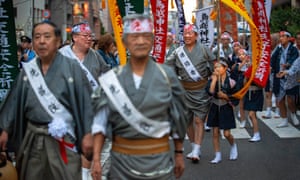
Harding says: I can imagine Tokyo becoming quite a bit more diverse in the next few decades. Japans bureaucracy is backing it, and the story of Japans past 150 years is that its bureaucrats almost always get what they want in the end. I could see quality of life improving too. The result would be more like London than New York the latter was built on immigration from the beginning, whereas London wasnt, and Tokyo wont be. I could imagine Tokyo becoming a bilingual city, even.
Ultimately, as Japan grapples with a looming demographic crisis, the opening up of Tokyo may become inevitable as a matter of survival.
Theres a belief here that businesses will go under unless they attract foreign tourists, says Kei Ono, chief manager in the business planning section at Kabukichos Shinjuku Prince hotel, where as many as 40% of guests are from overseas.
Nearby, inside a basement bar through a door with a sign imploring English speakers to Dont warry, be happy! Shingo Shibamoto, a member of a Kabukicho business association and owner of an okonomiyaki restaurant, says outward-facing neighbourhoods such as Kabukicho which, though home to the citys red-light district, also attracts as many as a quarter of a million people every day to around 4,000 bars, restaurants, cafes, pachinko parlours and video arcades are the future of an open Tokyo.
This has always been a place for outsiders to come and live and work, he says. Traditionally it attracted Chinese and Korean people, but now theyve been joined by people from south-east Asia. I think our neighbourhood has a genuinely global appeal. And as older people who have been here for decades hand their businesses over to younger generations, the pace of change will only increase.
Guardian Cities is live in Tokyo for a special week of in-depth reporting. Share your experiences of the city in the comments below, on Twitter, Facebook and Instagram using #GuardianTokyo, or via email to cities@theguardian.com

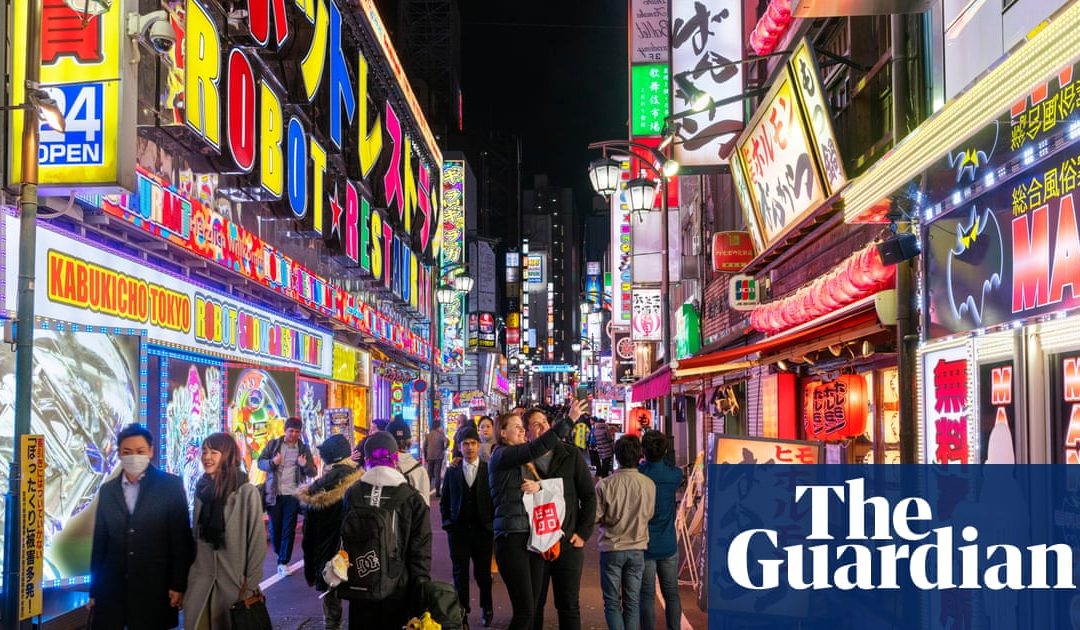
Recent Comments